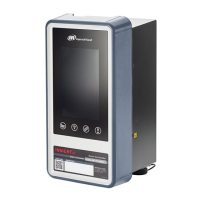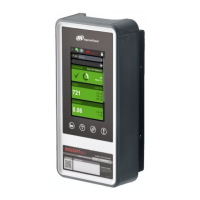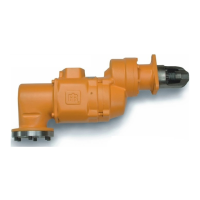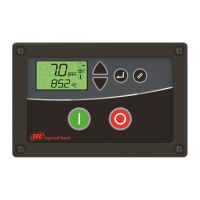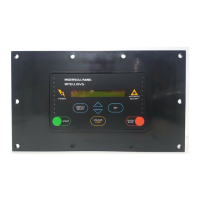4.3 STARTING AND STOPPING
There are general rules to keep in mind when starting an
air system controlled by an ISC. However, there is not
one, strict way that it has to be done. Observe the follow-
ing rules to ensure a smooth start up.
1. Compressors can be either started or stopped when
the ISC is started.
2. Each compressor must be started at its own control
panel and placed in a mode able to load before the ISC
can take control, If a compressor is stopped locally, it
must be started locally again. The following list outlines
what to do for each of five types of Ingersoll-Rand
Intellisys compressors to enable them to give control to
the ISC. It is recommended that all compressors have
the auto start/stop feature installed for maximum energy
savings.
5-10 Install an ISC Interface II Kit.
Start the compressor (it auto loads).
SE Models Turn the sequence option set point
“ON”.
Start the compressor (it auto loads).
U-Series Start the compressor.
Press the LOAD button.
SSR/Sierra Turn the sequence option set point
“ON”.
Start the compressor.
Press the ON-LINE/OFF-LINE button.
Recip Turn the sequence option set point
“ON”.
Start the compressor.
Press the CONSTANT SPEED
CONTROL or AUTO/DUAL button.
3. After all installation and set up instructions have been
completed as described earlier in this manual and the
display shows “READY TO START”, the ISC is started by
pressing the SEQUENCER START button.
4. Based on the current pressure reading and the Target
Pressure set point, the ISC will load compressors in the
order specified by the current sequence. Any compres-
sor not properly started and enabled for sequencing will
be skipped in the sequence. Each compressor’s status
can be observed on the ISC, refer to Section 4.5. If a
compressor is enabled after the ISC is started, it will be
included in the sequence in its appropriate position when
demand for air warrants it.
5. The ISC leaves the auto start/stop function to the indi-
vidual compressors. The ISC will not stop machines. A
compressor will stop itself if it meets its own set point cri-
teria for doing an auto stop. It will then restart when it
receives a load command from the ISC.
The ISC is stopped by pressing the SEQUENCER STOP
button. This stops all sequencing of compressors, but
compressor status is still available. Load and unload
control of the compressors is returned to their respective
local controllers. As long as the Rotation Mode set points
are not changed, pressing the SEQUENCER START
button will restart the ISC operation in the same mode it
was in when stopped.
NOTE: When the ISC is stopped, each compressor
might start, stop, load or unload itself depending on its
own local conditions and set points. For example, if the
ISC is stopped while it is operating the system at a pres-
sure lower than a compressor’s on-line setting, and the
compressor is stopped by its Auto Restart, the compres-
sor might immediately start.
4.4 ISC STATUS
Repeatedly pressing the SEQUENCER STATUS button
will step the display through the following ISC status
messages.
System Pressure
Current Sequence
Mode of Operation or Time to Next Rotation
Target Pressure
Clock
System Pressure is the air pressure currently being
measured by the ISC pressure transducer. This is the
normal, or default, display message after the ISC is
started. The display will automatically return to this mes-
sage if no button is pressed in 30 seconds.
Current Sequence is the sequence of compressors cur-
rently being followed by the ISC, showing the compres-
sor numbers in order from left to right.
Mode of operation is “EVENT MODE” if the ISC is cur-
rently operating in Event Rotation Mode or “MANUAL
MODE” if currently in Manual Rotation Mode. If the ISC
is currently in Timed Rotation Mode, the display will be
“SEQ CHG 125 HRS” showing how many hours (exam-
ple is 125) until the ISC rotates to the next sequence. If
the remaining time is less than two hours, it will show the
time in minutes.
Target Pressure is the air pressure in the Pressure
Setting that the ISC is currently using for managing the
air system.
Clock is the current day of the week and the current time
expressed in 24-hour format.
21
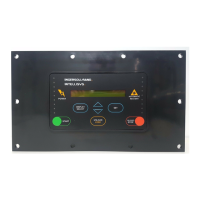
